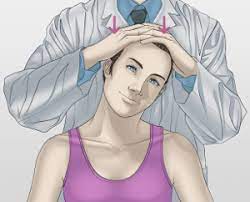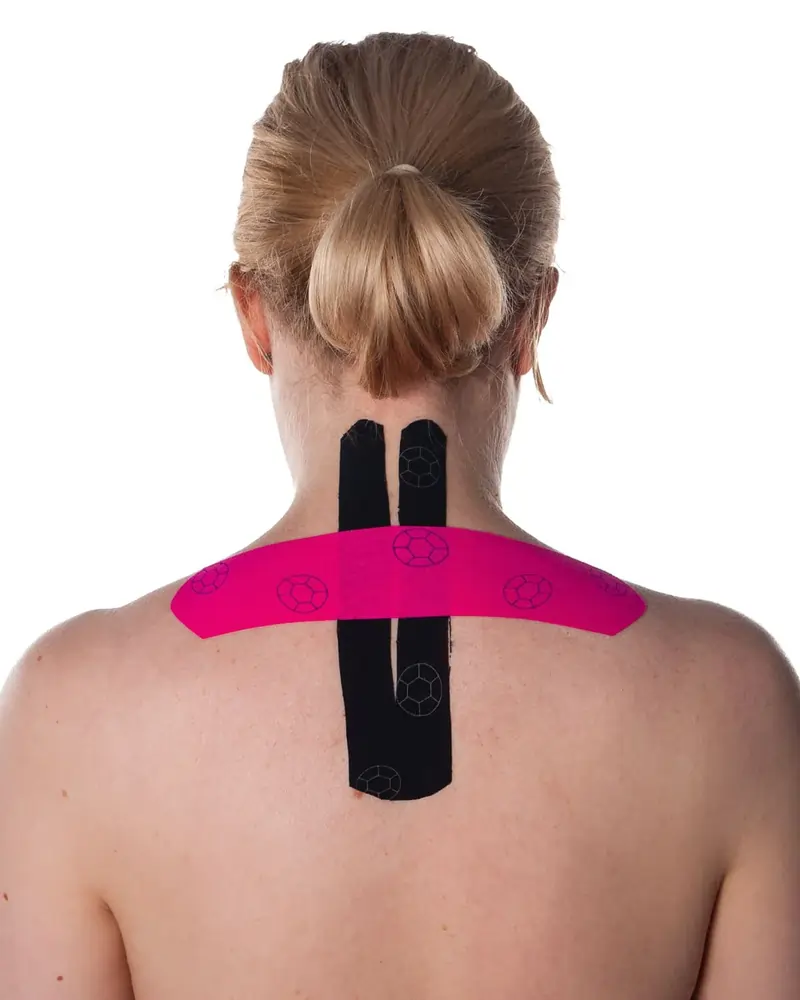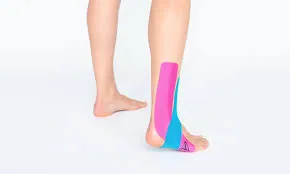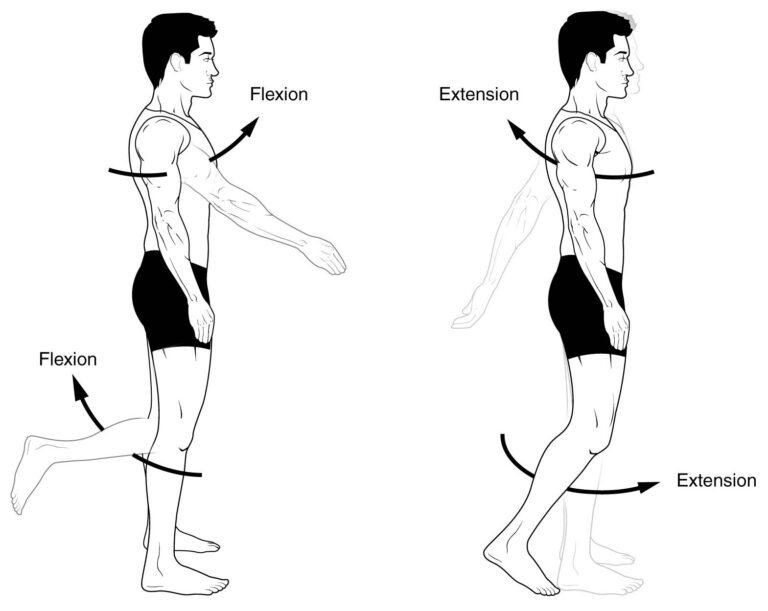TAPING TECHNIQUE FOR NECK PAIN
Table of Contents
Introduction:
Taping for neck pain is a highly effective technique to relive pain and further support to the involved area of neck.This is most effective and supportive treatment for neck pain.It is give static as well as dynamic support to the neck. kinesio taping give dynamic support to the involved area while typical taping give static support to the involved area of treatment.
Acute neck pain is very common and usually nothing to worry about. Tense muscles are often to blame, for instance after working on the computer for a long time, being exposed to a cold draft, or sleeping in an awkward position. But in many cases there’s no clear cause. Acute neck pain usually goes away within about one to two weeks. In some people it comes back again in certain situations, such as after work or intensive sports.
Kinesiological tapping could be a rehabilitative cum protecting use of elastic kinesiological tapes to supply :
- reduction in neck pain whereas any neck injury
- enhancing performance of affected neck area
- preventing any injuries to the neck
- support to the neck
- repositioning of structure of neck
- facial and ligamentous correction of the neck.
- Neck pain can have causes that aren’t due to underlying disease.If the symptoms last longer than three months, it’s considered to be chronic neck pain.
Psychological stress is frequently a factor if the pain becomes chronic.Some people who have neck pain avoid doing physical activities for fear of making things worse or injuring themselves. But there is no reason to worry as long as no warning signs of more serious problems arise. It’s even a good idea to stay active and carry on as usual despite the pain. Exercises that target the neck can help to prevent neck pain.Neck pain is very common.
It is estimated that about 1 in 3 people are affected once a year – women more often than men. The symptoms are usually harmless and go away on their own after a while. But they might keep coming back again, too. The risk of neck pain problems becoming chronic generally increases with age.
Neck pain is also often more persistent in people who have already had back pain or a slipped disk.The head is supported by the lower neck and upper back, and it is these areas that commonly cause neck pain. The top three joints in the neck allow for most movement of the neck and head. The lower joints in the neck and those of the upper back create a supportive structure for the head to sit on. If this support system is affected adversely, then the muscles in the area will tighten, leading to neck pain.
Anatomy of cervical spine:

- Your neck and back are made up of small bones called vertebrae. These are stacked on top of each other to form the spinal column.
- The spinal column supports your head and protects the spinal cord. This is the main structure that links the network of nerves throughout your body. Messages travel along this network sending sensations, such as pain, to your brain.
- The top seven bones in the spinal column form your neck, and these are called the cervical vertebrae. The bones are linked together by facet joints. These are small joints between your vertebrae that, together with your neck muscles, allow you to move your head in any direction.
- Between the vertebrae are discs of cartilage. The discs act as shock absorbers and give the spine its flexibility. A slipped disc occurs when one of these discs slips slightly out of its natural position in the spine.
Causes of Neck pain:
Neck pain can be caused by many different things. These include are :
- Weak and overused neck muscles: For instance, sitting at a desk for a long time – particularly in awkward positions with slightly tensed muscles – can cause pain and stiffness in the neck or shoulder areas, and sometimes headaches too. Activities that involve tilting your head back against your neck can also cause muscle problems in the neck area.
- These include things like painting a ceiling, or certain types of sports such as riding a racing bike or swimming breaststroke with your head in a fixed position.
- Wear and tear on the cervical spine: Over the course of a lifetime, various normal signs of wear and tear arise in the spine. The spinal disks become flatter, and small bone growths (spurs) may form along the edges of the vertebral bodies (the front part of the bones in the spine).
- This is called osteochondrosis. Osteoarthritis of the joints between the neck vertebrae is called cervical spondylosis. These changes can make it harder to move your neck, but they rarely cause neck pain on their own.
- Whiplash injury: This is an injury that can occur if someone drives into the back of your car in a road accident. The impact of the collision causes the head to rapidly jerk forwards and then back again.
- This usually causes small injuries in the muscle and connective tissue, painfully tense muscles, and difficulty moving your head for several days. The symptoms typically go away completely after a short time.
- Narrowing of the vertebral canal, or a slipped disk: If the vertebral canal is too narrow, or if spinal disk tissue bulges or leaks out and puts pressure on a nerve root, it can cause neck pain that radiates (shoots) into your shoulder or arm.
- A slipped disk: may but doesn’t always cause symptoms. Neck pain also sometimes comes from inflammatory conditions of the spine, jaw joint problems, or severe headaches Often it’s not possible to find a clear cause of neck pain.
- The bones, tendons, and nerves in the cervical spine are usually too close together to be able to determine exactly what caused the symptoms in the first place.
- If no specific cause can be found, doctors refer to the pain as “non-specific neck pain.” It’s often particularly hard to determine the cause of the neck pain if it’s chronic.
- Cervical radiculopathy: When the root of a nerve is pressed on or damaged as it comes out from your spinal cord in your neck (cervical) region, the condition is known as cervical radiculopathy.
- As well as neck pain, there are symptoms such as loss of feeling (numbness), pins and needles, pain, and weakness in parts of an arm supplied by the nerve. These other symptoms may actually be the main symptoms rather than neck pain.
- The common causes of radiculopathy are cervical spondylosis and a prolapsed disc. (A prolapsed disc is sometimes called a ‘slipped disc’ but the disc does not actually slip.
- What happens is that part of the inner softer area of the disc bulges out (prolapses) through the outer harder part of the disc, pressing on the nerve as it passes out of the vertebra.)
Symptoms of Neck pain:
The most common symptoms are :
- Pain and stiffness: You may feel pain in the middle or on either side of your neck, but it may also extend to the shoulder or to the upper chest. You may have pain or weakness in your arms. You may have tension headaches, where the pain can travel to the back of your head and sometimes into your ear or behind your eye.
It may be painful to move your neck and your muscles may feel tight, especially if you’ve been sitting or sleeping in one position for a long time. You may notice that your neck won’t turn as far as it normally does, for example when you try to look over your shoulder while reversing the car.
If you have pain and stiffness in the neck that came on quickly, possibly overnight, and you have difficulty lifting both arms over your head, this could be a sign of a condition called polymyalgia rheumatica (PMR). This is an inflammatory condition of the muscles. It’s more common in people over the age of 65. If you think you have this condition, you should see a doctor as soon as possible. - Numbness or tingling: A nerve can become pinched when the muscles, bones, or tissues surrounding it apply too much pressure. As a result, you may feel numbness, pin,s and needles, or a tingling sensation that can be felt down your arm, sometimes right down to your fingers.
You’ll find that numbness and tingling will go away once the problem resolves itself. However, if your symptoms are severe, talk to your doctor; they may be able to prescribe drugs that target the pinched nerve, such as gabapentin or pregabalin. - Clicking and grating noises: You may hear or feel clicking or grating as you move your head. This is called crepitus, and it can be caused by air bubbles popping, or tissues and bones moving over each other, in the joint. Other joints often do this too, but noises from your neck usually seem louder because they’re happening closer to your ears. You may also find they’re more noticeable at night. While this is a common symptom and can sound alarming, it’s not serious.
- Dizziness and blackout: If you feel dizzy when looking up or turning your head, this may be due to pinching of the arteries that run alongside the spine, otherwise known as vertebral arteries. This can sometimes happen as a result of changes in the vertebrae. Pinching of these vertebral arteries can occasionally cause blackouts as the blood flow is temporarily reduced. However, blackouts can have other causes so it’s important to seek medical advice if this is happening to you.
- Muscle spasms: Muscle spasms are the sudden stiffening of a muscle or groups of muscles in your body. Often there is no known cause and they can be very unpleasant. When it occurs in the neck it usually causes pain and stiffness down one side, which can make it difficult to turn your head.
It usually only lasts a few hours or days, although rarely it may continue for several weeks. You can try to ease the pain at home with gentle stretches, over-the-counter painkillers as well as heat or ice packs. People with muscle spasms report that applying heat is particularly soothing. - Other symptoms: If you have long-lasting neck pain and stiffness, particularly if your sleep is disturbed, then you may feel very tired and, not surprisingly, you may start to feel rather down or low in mood. Talking about your pain with friends, family or your doctor may help.
How to Prevent Neck Pain?
Most neck pain is associated with poor posture combined with age-related wear and tear. To help prevent neck pain, keep your head centered over your spine. Some simple changes in your daily routine may help. Consider trying to:
- Use good posture. When standing and sitting, be sure your shoulders are in a straight line over your hips and your ears are directly over your shoulders. Take frequent breaks. If you travel long distances or work long hours at your computer, get up, move around, and stretch your neck and shoulders.
- Adjust your desk, chair, and computer so that the monitor is at eye level. Knees should be slightly lower than hips. Use your chair’s armrests.
- Avoid tucking the phone between your ear and shoulder when you talk. Use a headset or speakerphone instead.
- If you smoke, quit. Smoking can put you at higher risk of developing neck pain.
- Avoid carrying heavy bags with straps over your shoulder. The weight can strain your neck.
- Sleep in a good position. Your head and neck should be aligned with your body. Use a small pillow under your neck. Try sleeping on your back with your thighs elevated on pillows, which will flatten your spinal muscles.
Special test for neck pain:
1. Cervical compression test or jockson’s compression test:

- Indications for Testing: This is part of a standard examination of the neck and is particularly helpful when neck pain is accompanied by arm symptoms (e.g., pain, paresthesia).
- Procedure: The examiner stands behind, placing hands on top of the seated patient’s head. Gradually increasing pressure is applied axially down through the neck. If arm symptoms are not aggravated, the test may be repeated with the neck in a variety of positions. Lateral flexion (Jackson’s Compression). The next option is to laterally flex the neck to the side of the pain and again apply an axial load.
- Maximum (Spurling’s Test): If necessary, lateral flexion can be combined with extension (both of these variations have at times been referred to as Spurling’s test). Rotation to the symptomatic side can be added to the extension and lateral flexion in order to further close down the IVF (maximum foraminal compression). Other variations include holding the compression for 30-60 seconds (Evans 2001), axial compression combined with rotation to the symptomatic side but without lateral flexion or extension (also called Jackson’s compression), or adding a quick vertical blow to the top of the head (considered part of Spurling’s test).
- Mechanism: Nervous tissue. Axial compression reduces the size of the intervertebral foramen, compressing vessels and nerves. The IVF is further compressed with rotation, lateral flexion, and extension all to the same side. In cadaver studies, ipsilateral rotation and extension are the most root-compromising movements. Joints and ligaments. Facet joints and intervertebral discs are also significantly loaded. The load on the facet is further increased when lateral flexion, extension, and rotation are all combined to the same side (also known as the “quadrant position”).
- Procedural Errors: Insufficient downward force will not compress the IVFs of the lower cervical vertebrae. Cervical flexion may also result in false negative tests. The testing procedure should be performed slowly and steadily to avoid rebound pain.
- Interpretation: Creation or reproduction of upper extremity pain, paresthesia, or numbness is suggestive of a radicular syndrome. Aggravation of local neck pain only, suggests cervical disc derangement, facet syndrome, or inter-segmental dysfunction.
2. Cervical distraction test:

- Indication for testing: usually part of a basic orthopedic examination of the neck. it is most useful in patients with possible radicular syndromes. it may be useful to help document cervical sprain or facet capsular sprain.
- Procedure: The patient is seated in a neutral posture. The examiner places thumbs under the patient’s occiput, thenar eminences under mastoid processes. The examiner gradually adds force superiorly up to about 5 to 30 pounds of lifting pressure. As an option, the distraction can be held for up to 30-60 seconds
- Mechanism: Nervous tissue: Distraction opens the IVF, potentially relieving pressure on the nerve roots.
- Joints and ligaments: Distraction opens the IVF, unloads the disc (and may relieve disc pressure on a nerve root), and unloads the zygapophyseal joints, but may create stretching of the facet capsule and other ligaments.
- Muscles: Some muscles are placed under increased tension. Occasionally, a muscle strain may be aggravated, but this is equivocal and not a major clue to the diagnosis.
- Procedural Errors: The examiner must use caution to avoid lifting the jaw and compressing the TMJ. If the distractive force is insufficient to adequately unload the lower cervical spine, false negatives may occur. The test should be performed in a slow, steady manner. Sudden lifting may cause needless discomfort; too rapid a release may trigger a “rebound” pain.
- Interpretation: A decrease in arm symptoms suggests IVF encroachment. Further, it also suggests that traction therapy may be beneficial for this patient. An increase in local pain with distraction may suggest a ligamentous sprain, or facet capsular sprain, or may be aggravating a muscular strain.
Taping for neck pain:
Developed By Dr. Kenzo Kase in 1979. The Kinesio Taping® Method is the definitive rehabilitative taping system of knowledge, is designed to facilitate the body’s natural healing process while providing support and stability to muscles and joints without restricting the body’s range of motion, as well as providing extended soft tissue manipulation to prolong the benefits of manual therapy administered within the clinical setting.
Latex-free and wearable for days at a time, Kinesio Tape is safe for populations ranging from pediatric to geriatric and successfully treats a variety of orthopedic, neuromuscular, neurological, and other medical conditions. The Kinesio Taping Method is a therapeutic taping technique that not only offers you the support you are looking for but also assists in the rehabilitation of injury and physiological dysfunction.
Application of tape:

- The tape was waterproof, porous, and adhesive, and had a width of 5 cm and a thickness of 0.5 mm.
- The first layer of tape consisted of a blue Y-strip placed over the posterior cervical extensor muscles, from the insertion to the origin, with paper-off tension, which the manufacturer applies to the tape against its paper backing at approximately 15% to 25% stretch.
- Each tail of the first strip (blue Y-strip, 2-tailed) was applied with the patient’s neck in a position of cervical contralateral side bending and rotation.
- The tape was first placed from the dorsal region (T1–T2) to the upper cervical region (C1–C2). The overlying strip (black) was a space tape (opening) placed perpendicular to the Y-strip, over the mid-cervical region (C3–C6), with the patient’s cervical spine in flexion to apply tension to the posterior structures.
How to remove tape?
- So presently you’ve got your tape on and you’ve gotten that additional support throughout your chosen sporting activity, it’s time to need it off, so enable the United States to ease the tactic of removing physiology tape for you. the foremost effective tip we are going to provide once it involves removing your physiology tape is to peel the skin from the tape, not the tape from the skin.
- But in terms of the actual methodology, 1st ensure you’re removing the tape in an equivalent direction as a result of the expansion of the hair below it, and despite what you’re doing don’t rip the tape off kind of a plaster!
- Start slowly, folding the corners of the sting back bit by bit, guaranteeing that you’re birth the removed tape on the rear of the applied tape, as opposition propulsion the tape on top of and aloof from your arm.
- As you’re scraping the tape, hold your skin down beside your completely different hand and either regulator it or pull it gently among the opposite means of the tape. This helps the skin and so the tape to separate heaps expeditiously but with no discomfort.
- If the tape has been applied over a furred region of the body, it helps to maneuver on the tape as you are peeling it off, as a result of the pressure helps avoid a lot of pain.
- It’s knowing have shaved the realm before applying the tape but, as this isn’t frequently smart, taking this precaution square measure reaching to be necessary to some.
- want a bit of additional assistance? Apply oil directly onto the tape, rub it in, and wait around 10 to 20 minutes before removing it slowly. This will facilitate reducing the viscousness of the tape and make it easier to induce obviate.







